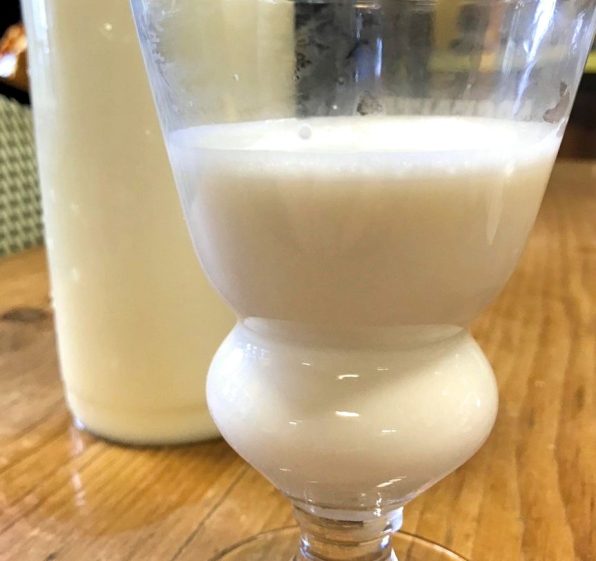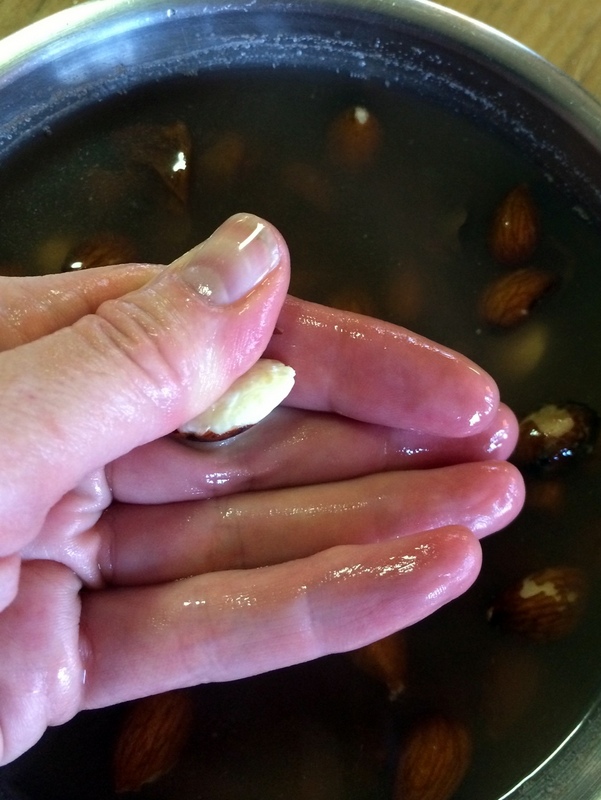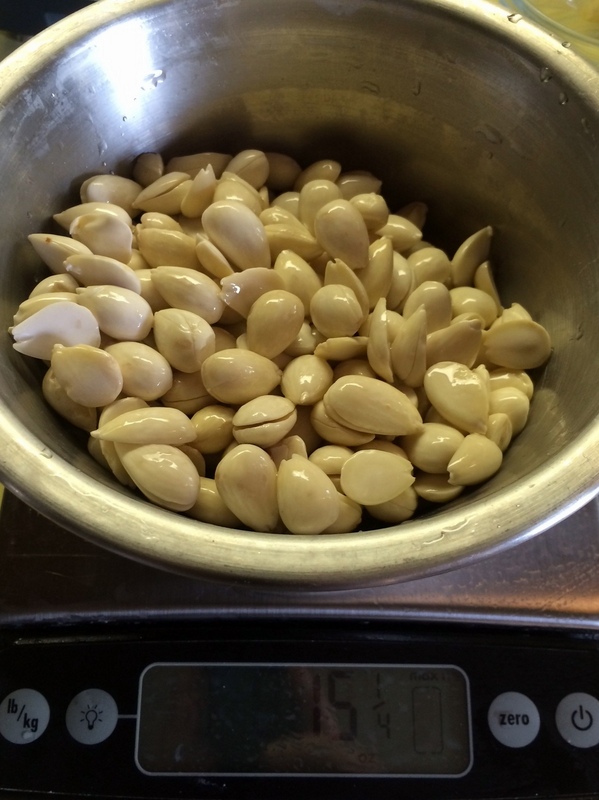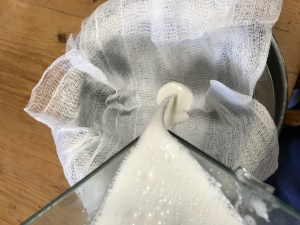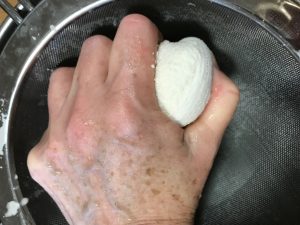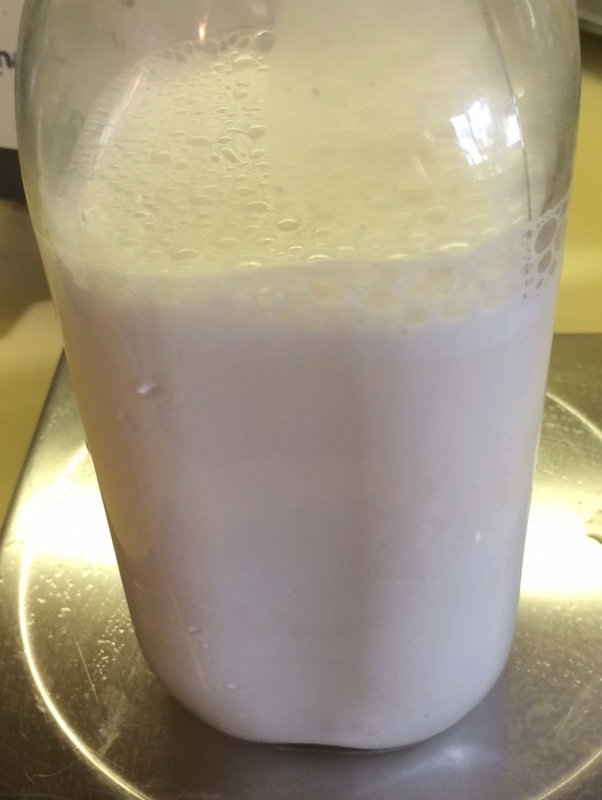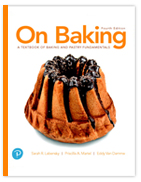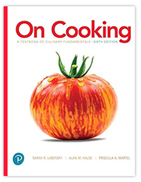If you drink neither bottled fruit juice nor canned soup, why would you purchase almond milk in a carton? It is just too delicious and easy to make at home. I call this Better from Scratch: Almond Milk. Drink it alone on a hot day, in your coffee, on cereal, soups and in smoothies. Bake with it, cook with it. Enjoy it.
The market for “alternative dairy beverages” is more than 23 billion dollars as of 2021. (It’s it is projected to reach 65 billion by 2030.) And almond milk sales lead the pack. Almond milk tastes great and is an excellent source of Vitamin A, D and E as well as a low fat and cholesterol-free alternative to cow’s milk. Most prepared almond milk has flavorings, sweeteners and stabilizers. For a small household, making almond milk at home is easy and efficient. Prepare a batch and it will last for a couple of days in the fridge. (Whisk it around before serving because the fats and solids may separate.) And you’ll be able to use the pulp in baked goods or sprinkled over a bowl of oatmeal. If you dry out the pulp, use it as a coating on sliced vegetables or fish for frying.
How to Make Almond Milk at Home
To make almond milk at home, soak one pound of blanched almonds in cool water in the refrigerator overnight. This softens and plumps the almonds. They will grind more easily. (Blanching almonds at home is rather simple but take about 15 minutes of hands-on work. Soak the almonds in hot water for 30 minutes to an hour. Then squeeze each almond between your thumb and index finger until it slips out of its skin.)
The next day, drain the liquid.
Place the almonds and about one and a quarter cups of distilled water into a blender. Grind the nuts on high speed until they are finely pulverized. This will take as long as 5 minutes depending on the speed and power of your blender. Continue to blend until the milk is smooth and fluid. If you can feel a gritty texture from the nuts, blend some more.
Pass the liquid through cheesecloth or a fine strainer to remove any solids.
Squeeze as much of the liquid as possible from the cheesecloth.
I call this First Press Almond Milk. It is what I like to drink straight. You can return the ground almond pulp to the blender with additional water to extract more milky deliciousness. When combined with the first batch of strained milk, you will have a slightly lighter product. Here is a batch of foamy, fresh almond milk ready to be used.
Selecting the best almonds for your home brew is more of a challenge. Although certain varieties have more natural almond extract flavor, it is difficult to find almonds, or any tree nut marked by variety. (Carmel, one popular California variety is a good choice. Tiny Mission almonds are perfect for making almond milk.) To assure freshness, buy from a retailer that has a steady turnover. Your local health food store is a good bet. Or buy online directly from a grower.
A silk or nylon mesh bag for making raw nut milk is a handy thing to have. You can find them at Whole Foods and online. (Cheesecloth works too but it can shed cotton fibers.)
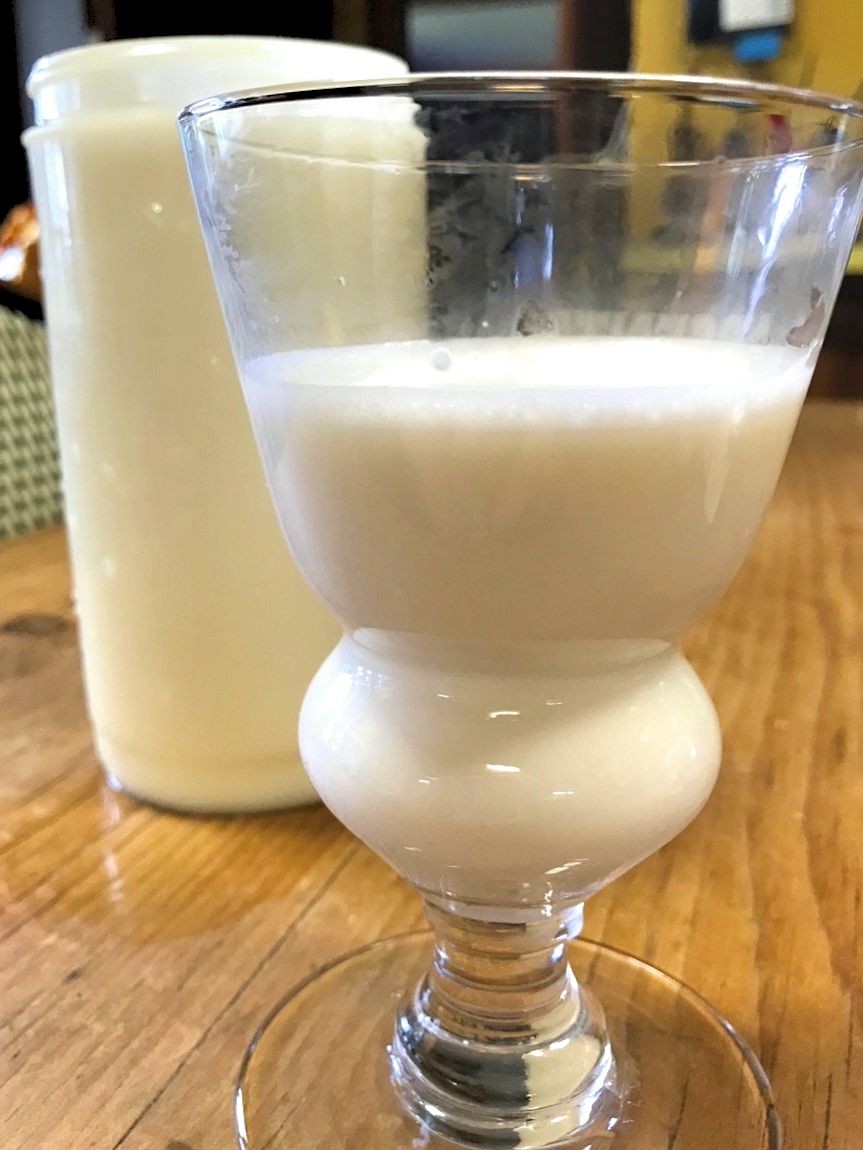
A glass of freshly made almond milk bears no resemblance to a prepared product. There is a rich creaminess when you make almond milk at home with whole almonds. While I have listed specific quantities, any quantity of almonds and water can be ground to make the milk. My favorite is what I call First Press Almond Milk, a batch made from a smaller quantity of water and almonds. It is what I like to drink straight. (You can return the ground almond pulp to the blender with additional water to extract more milk goodness. When added to the first batch of strained milk, you will have a slightly lighter product.)
Whichever style you prefer, avoid using natural almonds, those with their dusty skins that will darken the milk and add a dry, muddy taste to your almond milk.
Serve the almond milk well-chilled or use it in place of dairy milk in puddings, in soups or for cooking rice or other starches. Best used fresh, almond milk will keep two days in the refrigerator but may lose some of its bouquet.
To save the almond meal for other uses, spread it out onto a clean baking sheet. Dry it out in an oven set to 250°F. I stir it from time to time and find that it dries out in about 30 minutes. Store the meal in a glass jar and use just as you would almond flour. Know that this pulp will have lost some of its flavor and natural oil. Blend the meal with fresh almond flour for best results when using it in baking.
Ingredients
4 cups, (approximately 1 pound) whole almonds
cool water to cover
3 cups (24 fluid ounces) fresh distilled water
¼ teaspoon almond extract or orange flower water, optional
1 tablespoon granulated sugar or honey, optional
Directions
- To remove the almond skins, place the almonds in a deep bowl and cover them with boiling water. Let the almonds sit for 30 minutes to an hour. Then squeeze each almond so that it slips from its skin.
- Rinse the blanched almonds under running water. Place them in a deep container and then cover them with fresh, cool water. Allow the almonds to soften in the bowl overnight in the refrigerator.
- The next day, pour off the soaking liquid. Place the almonds and about 3 cups of the fresh water in the bowl of a blender. Grind the almonds and water until the nuts are finely pulverized. (Depending on the power and speed of your blender, this may take as long as 5 minutes. If you can feel a gritty texture from the nuts, blend some more. )
- Line a strainer with a large piece of cheesecloth or a nut milk bag. Place the strainer over a large deep bowl then pour the almond mixture into the strainer. Push the almond pulp with a large flat spoon to remove as much of the milk as possible.
- Reserve the pulp for another use.
- Stir the flavorings and sweetener into the almond milk if desired.
- Use this First Press almond milk as a beverage or in your favorite recipe.
Notes
You may continue to grind the almond pulp with up to 2 cups (16 fluid ounces) additional fresh water, passing the ground pulp through a cheesecloth-lined strainer or fine sieve to extract as much of the almond milk as possible. The milk will become less rich the more water used.

